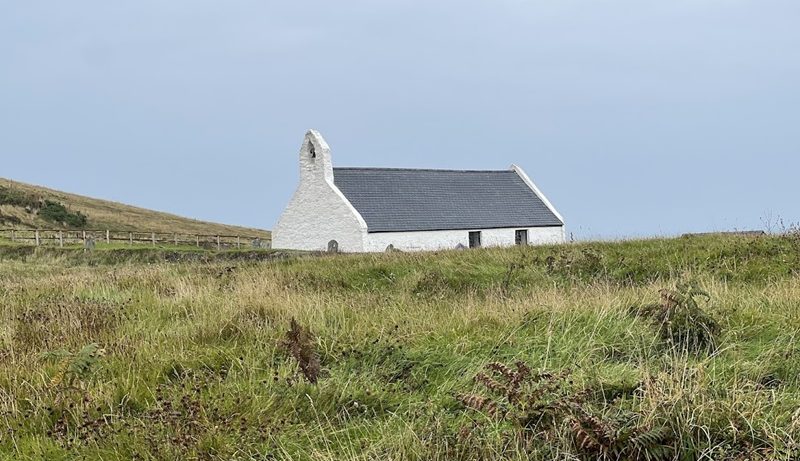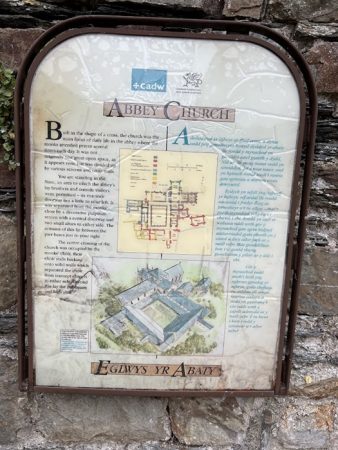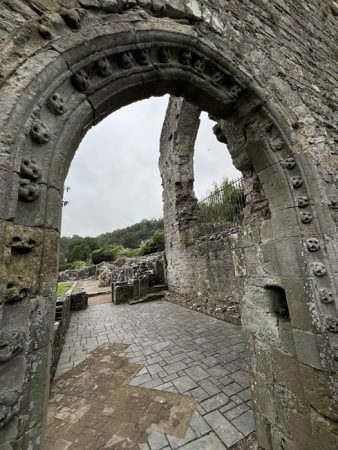St Hywyn’s Church
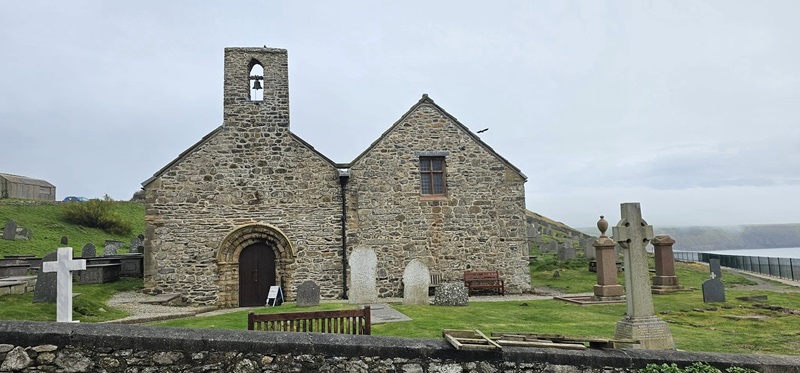
The most northerly church on this route and the first stop on our ‘pilgrimage’ is St Hywyn’s Church, Aberdaron. This beautiful little church stands above the beach overlooking the Irish Sea, the sound of its waves audible from within the stillness of the medieval chapel.
For a thousand years the Llyn Peninsula has attracted pilgrims for there are two ancient routes which wind their way towards the Holy Island of Bardsey. St Hywyn’s is situated where the northern and southern passages meet one another and has always had a close association with the island. The Holy Island was even mentioned by Pope Calixtus II who referred to three pilgrimages to Bardsey as the equivalent of one to Rome. Another chronicle gives Bardsey the lofty title of the ‘Rome of Wales’ and the burial place of 20,000 saints.
Saint Hywyn himself arrived in Wales in the sixth century, one of the numerous companions of Saint Cadfan, and established a clas here whilst Cadfan was simultaneously setting up the monastery on Bardsey. At the time the church would have been a simple construction but in the time of Gruffyd ap Cynan (r.1081-1137), King of Gwynedd much of the present church was constructed in stone to offer a final resting place before pilgrims completed the journey over the Bardsey Sound to the sacred island. Some other interesting features of this church are the sixth century gravestones commemorating two priests of the earliest days of Welsh Christianity, Senacus and Veracius.
St Padarn’s Church

Travelling south, hugging the coastline we come to St Padarn’s Church in Llanbadarn Fawr near Aberystwyth. Also founded in the sixth century, St Padarn’s has undergone many changes, from a monastic community in the early Welsh clas style, a Benedictine priory, back to a clas, a royal rectory, a church under the purview of Vale Royal Abbey in Chester, and since the 16th century a parish church.
The church saw many famous figures come and go. In the 11th century Llanbadarn Fawr parish was the largest in Wales and was attracting the intelligentsia from near and far to what had become a centre of learning and writing. The ranks of scholars included men like Sulien and Rhygyfarch who are credited with compiling some of the most important documents on the history of the Welsh church.
In the 12th century, St Padarn’s was the resting place for the chronicler Gerald of Wales and the Archbishop of Canterbury whilst they were preaching the Third Crusade. It is said they were able to recruit many men from the area.
As for unique things to see at St Padarn’s, you can find two medieval stone crosses inside that date from the 10th century and were probably used by Christians as a teaching tool for familiarising the native Welsh with gospel stories. Additionally, a fine memorial to Lewis Pugh Evans, who was born nearby and received the Victoria Cross for his valiance during the Battle of Passchendaele in October 1917 can also be found inside mounted to the church wall.
St Ffraid’s Church
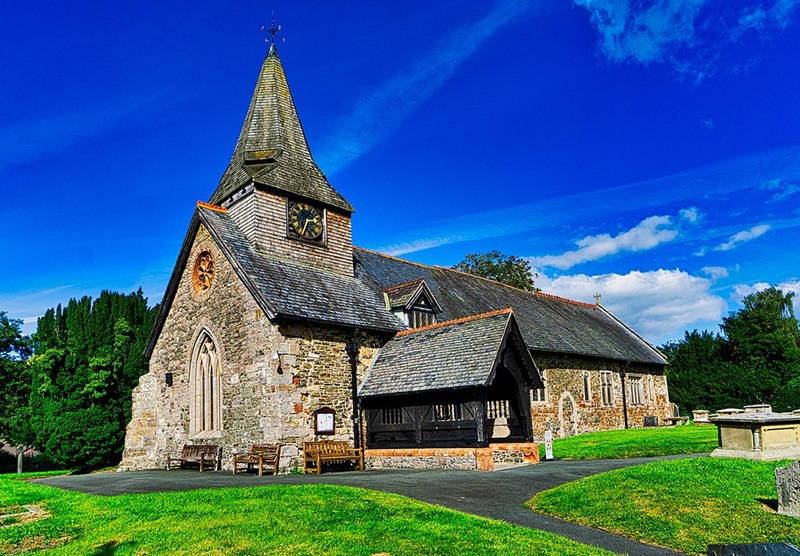
Travelling south again, St Ffraid’s sits perched 41 feet above sea level in the coastal village of Llansantffraed. Being so close to the sea the church is frequently exposed to coastal erosion and coastal gales which batter its ancient walls. Some locals say it is no wonder that the church is dedicated to Saint Ffraid, commonly known as Bridget in the rest of Britain, a patroness of protection.
A church has been on this site since at least the 12th century. We know this because in 1158 nobleman Roger de Clare granted St Ffraid’s to the Knights Hospitaller of Slebech. A grant that was later confirmed by Rhys ap Gruffydd. Very little of this church now remains, reduced to merely the square limestone font decorated with rosette mouldings that sits within the remodelled building. The tall square tower which faces the sea was constructed in the 16th century and miraculously retains its original windows and atop a medieval bell frame. The rest of the building however, was built in the 19th century.
Inside the church, if you look up into the porch roof you will notice an ornate wooden beam. This timber was reused from the medieval rood screen. A rood screen was used to separate the nave from the chancel area around the altar that was reserved for clergymen. The altar was the focal point of medieval Christian churches but this shifted during the Reformation and the rebuilding work done at St Ffraid’s reflects that. In 1839, David Francis rebuilt the church in what is referred to as ‘preaching box’ style. This meant that the congregation faced the pulpit, in direct line of the preacher, rather than the altar. The most eye-catching features of St Ffraid’s though, are the stained-glass windows, particularly that of St Ffraid herself depicted holding a bowl of milk.
St Michael’s Church
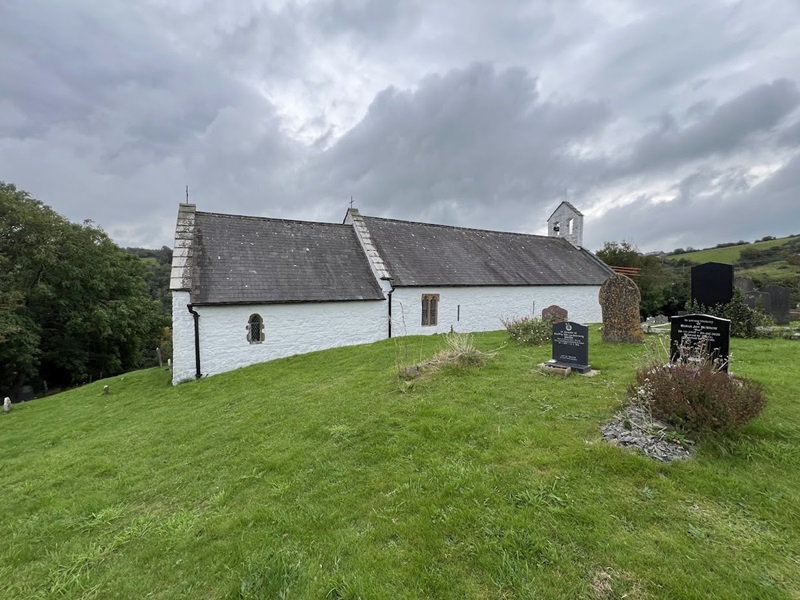
Keeping the sea on your right and passing the breathtaking Dolau Beach and Cilborth, we come to the village of Penbryn. Penbryn comes from the Welsh for ‘hilltop’ and upon that summit overlooking the Bay we find St Michael’s Church. This church has its origins in the 12th century and according to the Church in Wales it is the oldest in the diocese of St David’s.
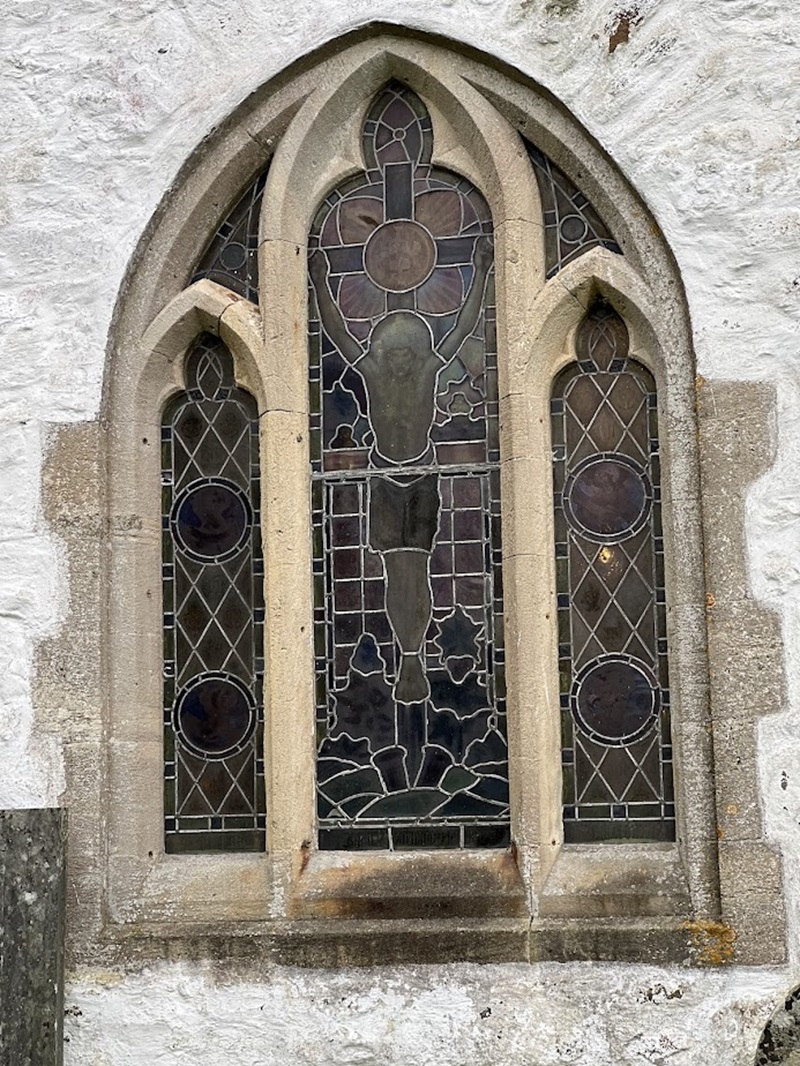
This is supported by the dating of the interior limestone and the existence of two medieval fonts, a square one in the chancel area and another in the porch. The roof of St Michael’s is probably the next oldest, dating from around the 15th century, with the porch having been added in the 17th and finally the windows being a 19th century addition.

St Michael’s served as a parish church during the medieval period, a part of the Deanery of Sub-Aeron. More specifically, the church was in possession of the Premonstratensians of Talley Abbey in the 13th century as confirmed by Rhys Fychan, Prince of Deheubarth. This proved to be a point of contention though as the Bishops of St Davids vied for the right to be patrons over the church. The dispute was eventually settled but not until the Pope himself stepped in!
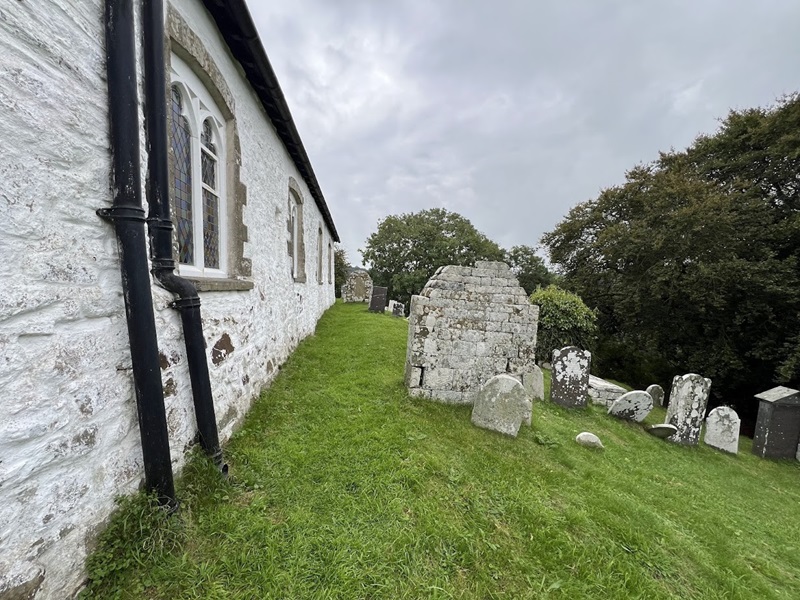
Of more recent past, you can also visit the grave of the renowned Welsh author Allen Raine. Allen Raine, a pseudonym for the female novelist Anne Adalisa Beynon Puddicombe, was born in 1836 and went on to write many popular books set against the backdrop of the Welsh Revival, a major Christian movement that swept the country in the early 20th century.
Holy Cross Church
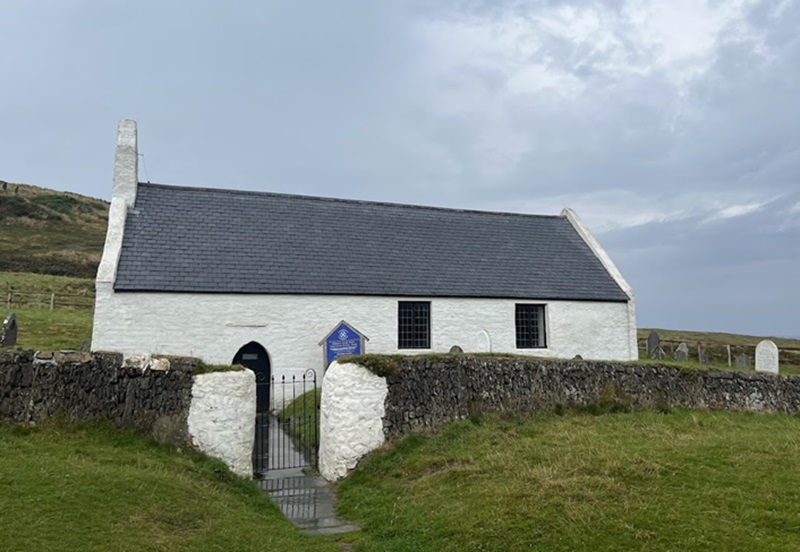
Just along the road from Penbryn is the secluded cove of Mwnt. Here, sat just above the golden beach is a stunning whitewashed church dedicated to the Holy Cross. This dedication is likely due to the fact that the hill that rises directly behind the church, Foel y Mwnt, once had a very large stone cross stood at its summit.
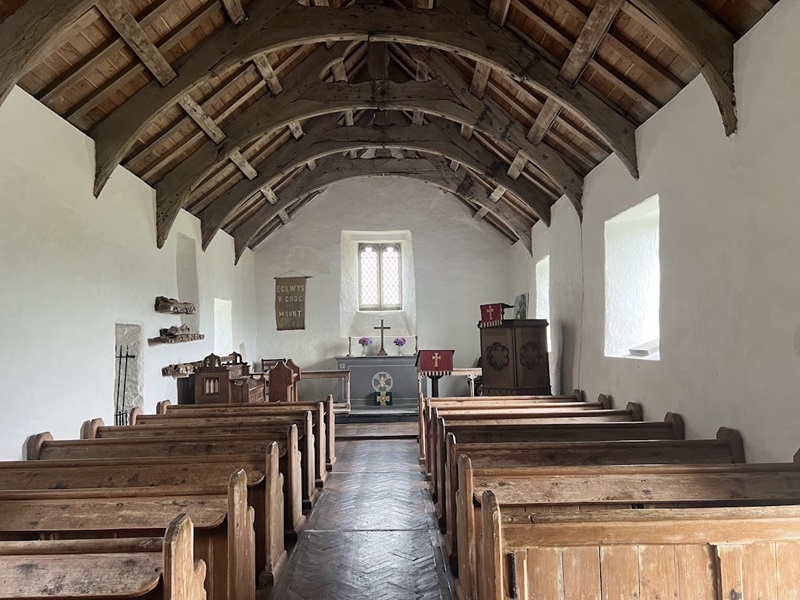
The church we see today was built sometime in the 14th century, although there has been religious activity on the site since the Age of Saints (c.410-700AD). Similar to previous churches on this route, Holy Cross had associations with pilgrims and the Holy Island of Bardsey. Firstly, the church was a useful resting place for monks who were transporting the bodies of saints to the island, whilst other pilgrims would stop here before continuing on to St David’s in the south.
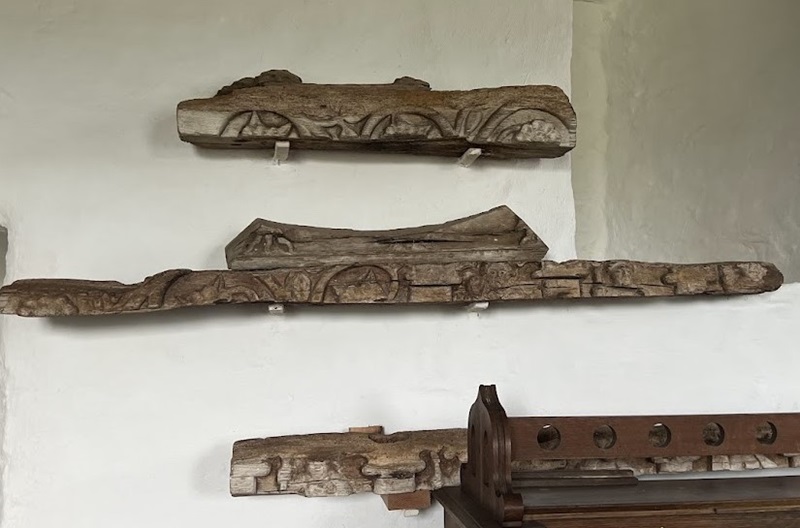
The crowning glory of Holy Cross is the remnants of a medieval rood loft. Set into the wall are timbers dating from the 15th century that have been beautifully carved. In addition to roses, you can also clearly see the heads and shoulders of saintly figures. It is likely there were twelve figures in the completed rood loft, one for each of Jesus’ disciples. Some of these faces also retain small traces of coloured paint. These rich greens and reds spark the imagination to the splendour that would have been Holy Cross in the Middle Ages.
St Dogmael’s Abbey
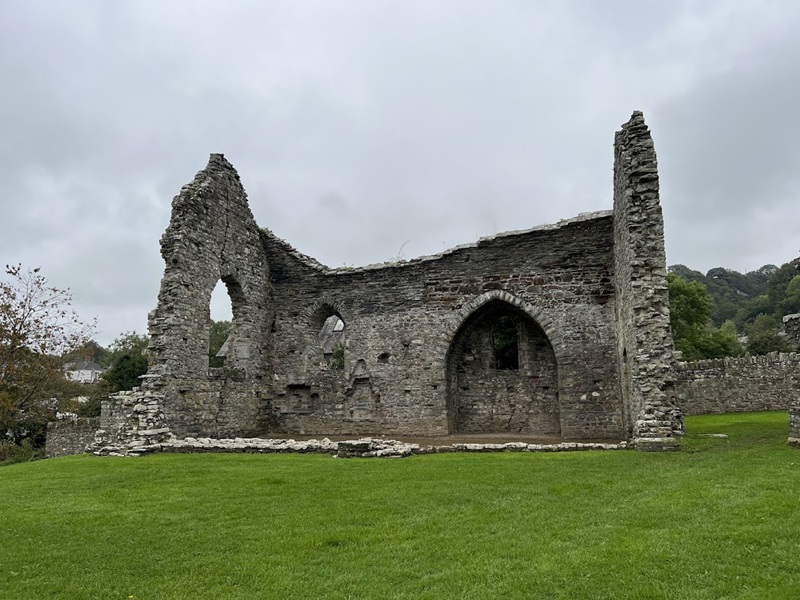
Finally, just west of Cardigan and sitting above the River Teifi as it juts in from the Bay, this medieval ruin is the perfect place to bring this ‘pilgrimage’ to its conclusion. St Dogmael’s Abbey was originally a Tironian house, formed in 1120, by Robert FitzMartin and his wife Maud Peveril. In fact, it was the only Tironian house to be established in England or Wales. What was unique about the Tironensians was the requirement that the brothers learn a craft, whether it be masonry, smithing, joinery etc. Therefore, it is almost certain that the monks had a hand in the construction of their own abbey.
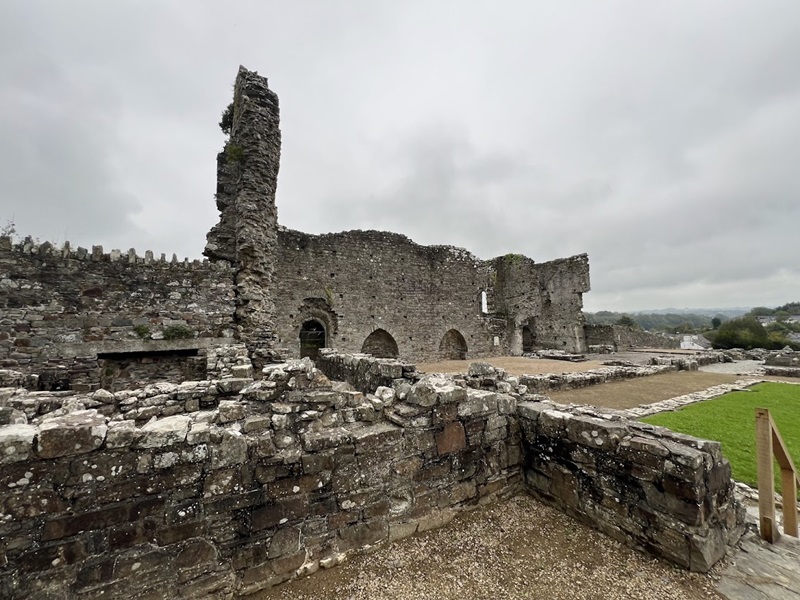
The abbey was expanded throughout its time in use by the monks and grew to become a pace of learning, famed for an extensive library. However, all but one of the books are lost, all that remains is a 13th century manuscript of the Historia Ecclesiastica by Eusebius.
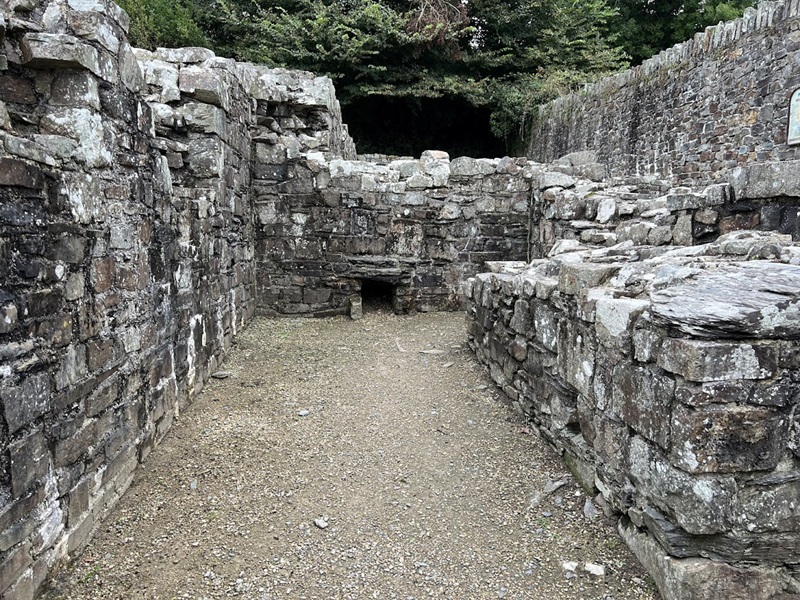
The architecture of the church, despite being a ruin, is fabulous. The 13th century nave is beautifully aligned, whilst there are also remains of a crypt and chapter house which date from the 14th century. Most popular however are the large sections of surviving medieval floor tiles in the abbey church. These demonstrate the exquisite craftsmanship of the medieval stonemasons.
Photos: GBC – September 2024
St Dogmael’s Abbey also has a very informative visitor centre with excellently preserved carved stones from the abbey ruin and a few examples of even earlier Christian stones which tell the tale of Christianity’s part in Welsh history.
Written by C. James McPherson

